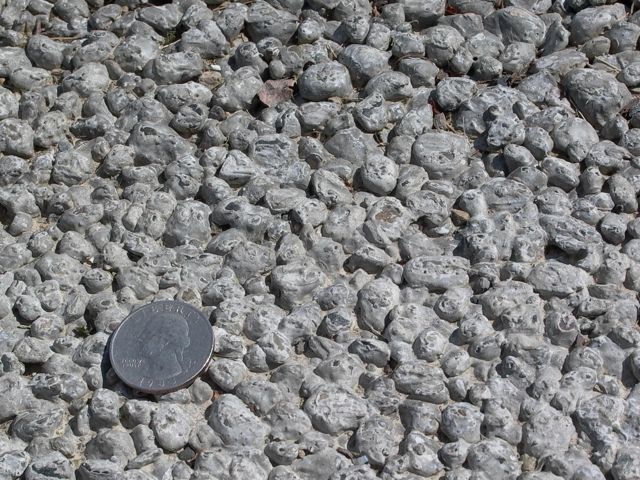Porous asphalt pavements are specially designed and constructed to allow water to pass through the pavement surface and reenter the groundwater bed instead of diverting these flows into stormwater drains and sewers. In this edition of the RoadReady newsletter, we will focus on the construction and maintenance of porous asphalt pavements.

Image courtesy Stormwater magazine
Comparing porous to dense graded asphalt
Porous pavement, also called pervious or permeable pavement, is constructed in much the same way as a dense graded mix. They can be made on the same equipment, from the same materials, and without special binders. There are a few notable differences, mainly that a porous pavement has a mix design with a lower concentration of fines. This helps create the air voids that make the pavement permeable to water. Pervious asphalt has a higher amount of asphalt binder – approximately 6% in porous compared to about 4% in dense graded. Additives may be included in order to help prevent draindown.
Side Note: Draindown is when the liquid asphalt in the pavement actually moves off of the aggregate and down to the bottom of the pavement due to gravity. This leaves the upper layers of the pavement bare of asphalt binder, causing the pavement to degrade quickly.
The other large difference between porous and dense graded asphalt pavements is in the design – porous asphalt is built over gravel recharge beds in order to help retain the water as it seeps back into the ground.

Image courtesy Smartplanet.com
Air voids
Typically, contractors try to minimize air voids in asphalt pavements. However, porous pavements are full of air voids – at least 16% air voids in the asphalt, while the base course is single sized crushed stone with about 40% air voids. The base course is a structural layer, but also provides temporary storage for water as it infiltrates the subgrade. A choker course, a layer of single sized clean stone, may also be placed to help stabilize the surface, but is optional.
Density is less important in porous pavement
It’s often said that density equals strength and quality in a pavement, but porous pavements are the exception to this rule. In permeable paving, the more important measure of success is properly constructing the open-graded pavement layer, which allows water to drain through the surface course. Instead of measuring density, a more important action item is to control the amount of asphalt binder that drains off the aggregate during storage, transportation, and placement.
It is important to measure draindown of asphalt binder – a max of 0.3% draindown is acceptable. (Note: for a reference on how to measure draindown, check out the AASHTO T305 test.) Measuring draindown is important to ensure that the permeable pavement will last the full amount of its design life.
Costs
Pervious asphalt pavement, when including optional additives, is generally 10% to 20% more expensive than a standard dense graded mix, although since traditional stormwater systems may be reduced or bypassed entirely, there is an argument that overall project cost may be reduced significantly.
Construction
Construction methods for creating a porous pavement are very important. For example, compacting the base layers too much can cancel the benefits of designing and building a permeable surface course. Construction, which is naturally dirty and dusty, can clog the permeable surface with debris. Rain events during construction can permanently clog the base layers with sediment.

To prevent the compaction of the underlying soil, keep equipment off the permeable area as much as possible, and use tracked or oversize-wheel equipment. Incorporating proper erosion control during construction can prevent the contamination of both the subbase and surface with fine material.
Clean any sediment from the construction itself, since particulates can clog the pavement.
Maintenance tidbits
To ensure maximum performance of a porous pavement, air voids on the surface of the pavement need to remain open to allow water to percolate through. In areas where there is lots of sediment in the runoff, steps such as vacuuming twice a year can prevent clogs. Also, avoid road ice prevention with sand or cinders as that will require regular cleanings.
Of course, seal coats will ruin the permeability of a porous pavement – never seal coat a porous asphalt pavement. Seal coating a porous pavement is like applying Saran wrap to your pasta strainer – not such a good idea.
Patching a porous pavement is rare, but can happen over spots of especially weak subgrade. Patching small areas, under 50 square feet, can be done with either porous or dense graded asphalt. Larger patches should be patched with porous asphalt, to retain the integrity of the greater pavement structure and allow for continued drainage.
It’s not challenging…just different
Designing and constructing a porous pavement is no more challenging than constructing a dense graded pavement, but is different from the conventional wisdom of material densification during construction. Porous pavements continue to be used successfully in many low volume applications such as parking lots and residential streets. As communities continue to look to sustainable practices, education on the design and construction differences required to produce a quality porous asphalt pavement will be a critical tool for building long-lasting, successful projects.
As always, we would love to hear from you if you have any feedback or topics you would like us to cover in the RoadReady newsletter.

